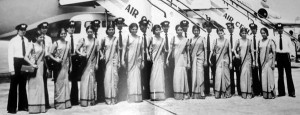World War II and the development of airports
View(s):By D.L. Sirimanne, (A veteran aviator)
After World War 11 the northern hemisphere of the earth was pockmarked with airfield, airstrips and devastated cities and towns. If not for America supplying arms to the valiant British, and Russia attacking the Germans from the north, Germany and Japan ould now have been conquerors of the globe. With the establishment of the United Nations the world looked for peace and development. The big countries developed fast and didn’t help other devastated European countries, even Germany to rise to their feet. America which defeated Japan helped Japan to what it is now, but other smaller countries who received independence are still plagued with rebellions, labour strikes, coups and tribal wars.
During the war air travel that existed was curtailed to a minimum. When the war ended the big powers refurbished and converted troop carriers to passenger aircraft to continue operating their international air services. Since then aircraft manufacturers designed larger and sophisticated passenger carriers, from propeller driven aircraft to turbo jets and finally to pure jets flying at 40,000 feet at almost Mach .09. From the humble DC3s to the present day Airbus 380 and Boeing 787 aviation expanded very rapidly and airlines now operate worldwide networks crisscrossing the globe even cutting down hours by flying over the North Pole as a short cut.
Airports too expanded from humble ones to major multi-runway air terminals which could handle hundreds of aircraft and millions of passengers each week. In fact they grew to accommodate an influx of air travellers all over the world. Present day airports are like large towns and passengers are taken by sky trains, escalators, walkalators, autowalks, lifts, silent buggies for the disabled, to travel from one end of the airport to another in a few minutes to the numbered gates with individual lounges and via a jetway to finally board the aircraft.
In the mid 1950s I had the opportunity of being stationed in Amsterdam and flying as a Radio Officer on KLM Royal Dutch Airlines. Schiphol airport then was very small made of wartime wooden cabins put together. KLM was building its new and magnificent Schiphol Airport on the other side of the runway which I saw from the air as a sprawling edifice. Once a Dutch captain with whom I was to do a flight told me pointing at a broken brick wall: “That was the only bit of wall left of our Schiphol Airport after the war. The airport was bombed twice, once by the Germans and then by the British to take it back.” I must proudly say the Dutch are a very industrious, innovative and hospitable people. All the aircraft operating at that time were DC3, DC4, DC6, DC7, Constellations, and Super Constellations which carried from 40 to about 100 passengers. Unfortunately during that time, although the aircraft were comfortable with excellent service, many flights were almost empty because only the rich and businessmen travelled by air.
Airports in the Middle East, even Cairo, Beirut, Damascus, Athens, Istanbul, Tehran etc, were small and other not so busy airports were mere sheds such as Kuwait, Bahrain, Abadan, Sharjah, Dubai, Aden etc, as most of the passengers were staff working in oilfields. Now they are huge and very busy airports. Even in the East airports such as Karachi, Bombay, Madras, Calcutta, Rangoon, Bangkok, Singapore, Hong Kong, Jakarta, Manila, Darwin, etc, all the way to Sydney were very small.
Our own Ratmalana Airport could accommodate only a few small aircraft, not the present day giants, and only KLM, BOAC or ANA operated once a week each through Ratmalana. Even the Katunayake airport that handled the international flights prior to BIA was a small shed. The airport staff including aircraft handling, Customs and Immigration was so small that every day it was the same people to work with and they knew each other very well.
Aviation in Sri Lanka after the war had small beginnings in 1947 and did not develop rapidly like some of the large airports in the world due to financial constraints and political bungling by the four year changes of governments. Katunayake airport was taken over from the RAF and a new airport was build for the Non Aligned Conference. It was named Bandaranaike International Airport. Gradually the airport expanded with new buildings and hangars as the only major hub for air travel. Many airlines went through Katunayake; unfortunately, the 30 year war impeded tourism development in Sri Lanka, but now with peace in the island, passenger traffic has improved tremendously reaching the millionth mark.
Of course, Sri Lanka needed another airport as an alternate for BIA at Katunayake. Hence the present Government built with the blessings of President Mahinda Rajapaksa a modern airport in Hambatota by the Chinese and its name is MATTALA Rajapakse INTERNATIONAL AIRPORT. It is a beautifully designed air terminal with a brand new runway and with the latest navigational aids.
Airports are expensive to maintain to international standards and need a substantial flow of capital and it is hoped the new Mattala International Airport in Hambantota will develop rapidly and would be self-sustaining instead of being a ‘sink hole’ to the Treasury. This new airport would aid the development of the southern end of the country with its beautiful broad sandy palm fringed beaches, beautiful hotels, comfortable tourist guesthouses and the vast blue Indian Ocean, a paradise for big game fishing.
Tomorrow’s opening of the Mattala Airport would be a historic occasion and every Sri Lankan will be proud of it and expect many international airlines to operate through this beautiful airport.
| Personal experiences
On the eve of the opening of Sri Lanka’s second international airport, an aviation veteran recalls the development of airports after World War II and his own personal experiences |
Follow @timesonlinelk
comments powered by Disqus




















